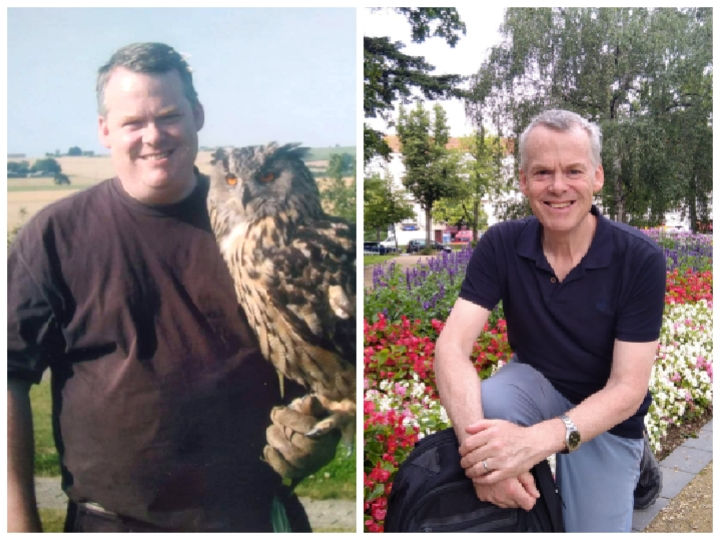Less is More - The Breathing Paradox
- Henry & Henry

- Oct 23, 2022
- 4 min read
Are you someone who, like me, runs or jogs, if only occasionally? If so, have you experienced that feeling where, after a short time, your breathing becomes laboured and your legs start to ache and struggle to maintain momentum? I have, especially when I was very overweight, and I assumed my weight was the cause of my discomfort. However, when I lost 100 pounds and attained a healthy body weight, I was disappointed to find that this only marginally improved my breathlessness and muscle fatigue whenever I jogged. So I then ascribed it to the fact I was simply out of condition. But even as I increased my physical fitness, I was still unable to eradicate the ragged breathing and painful muscles during my runs.
I’ve now come to realise that there was another factor, which was right in front of my nose but about which I’d never even given a moment’s thought. The missing piece of the puzzle is the breath. How do I breathe? And not only while running, but both during the day and at night while asleep? What I've learned over the course of the past few months, thanks to a combination of lots of reading, studying and listening to and watching various breathing experts (I put Patrick McKeown at the very top of the list) expound on the practice we all engage in every second of every day, has really opened my eyes to the importance of correct functional breathing. I am now aware of just how much the way we breathe can both positively, and negatively impact so many aspects of our life, including our physical and emotional health, our sleep quality, our ability to concentrate and focus, and our sports performance, and I’ve almost certainly been getting it wrong for a good part of my life.
A habitual snorer, and regular sigher, I now realise that it was my own disordered breathing that simultaneously led to, and was also a symptom of a protracted period of anxiety during my thirties. This was a time when I was assigned by the blue chip publishing company I was working for to relocate to The Netherlands to establish a sales office in Amsterdam. It was an exciting and at the same time daunting proposition. I simply packed a car and drove on to a ferry from Hull in the north of England to Rotterdam to start what was effectively a new life and career. I hardly knew anyone and had to grapple with all the bureaucracy that setting up an office from scratch in a new country entails. I felt a weight of responsibility and I began to suffer from anxiety and panic attacks. I remember how I would often struggle to take a satisfying deep breath, and the more I tried, the more anxious I would feel. I went to see a doctor and he wanted to prescribe antidepressants. I turned these down, as I didn’t feel depressed. I was also diagnosed with high blood pressure and was prescribed a course of beta blockers. But my symptoms of anxiety and being unable to breathe comfortably continued. A few months later I suffered a prolapsed lumbar disc which resulted in hospitalisation and surgery.
Fight or Flight
Though I had no inkling at the time, the symptoms I have described are typical of disordered breathing, and conversely can also have an impact on how we breathe, causing us to hyperventilate, or overbreathe. I may even have been able to avert my back problem and resultant surgery, had I been breathing correctly, since functional breathing has a significant influence on both our posture and on functional movement. Disordered breathing is common in today's fast-paced world, a symptom of being in a constant state of stress, our body's autonomic nervous system putting us into ‘sympathetic’ mode to prepare us for ‘fight or flight’. When we are in this state, we breathe faster and shallower, with our upper chest instead of slower and deeper, with our diaphragm. This becomes habitual and it eventually takes its toll, affecting our health and hampering our performance, both physical and mental.
But there is a silver lining when we experience these challenging symptoms. I've now learned that through increased awareness and a willingness to practice and incorporate breathing exercises regularly in our day to day lives, we can reverse these habits and reap the benefits of better quality sleep, more energy, enhanced performance and improved general health.
What do we mean by functional breathing?
By bringing our attention to our breath, we are able to reap important and beneficial physiological changes. Correct breathing is inhaling through the nose and exhaling through the nose and engaging the diaphragm. And breathing should be light, slow and deep, instead of heavy, fast and shallow. Breathing deep means breathing low, engaging the diaphragm, and does not mean taking a big full lungful of air, as we are so often told to do. With breathing, less is more. Breathing this way allows better oxygenation of our cells. It can bring a number of rewards, some of which I've outlined above. Did you know it can even suppress our appetite and encourage more efficient processing of foods, thereby contributing to weight loss? And it can help us to become more focused and less prone to distraction, enabling us to make better decisions.
The Oxygen Advantage™

After practising the functional breathing techniques for just a few weeks, my energy and ability to run further without becoming breathless increased noticeably. I’m excited about how adaptations to the way we breather can have far-reaching effects and benefits.
If I can do it, so can you! It's changed my life and it's been the catalyst for me to become a Certified Functional Breathing Instructor, which I'm pleased to confirm I've just completed. If you'd like to find out more information about this you can check it out here



)_20230830_134131_0000.png)



Comments